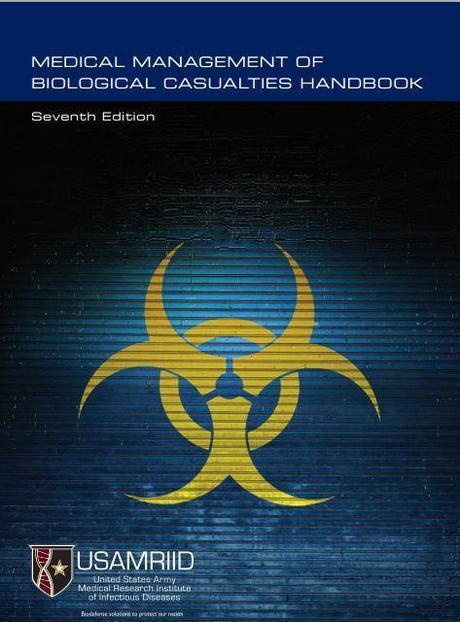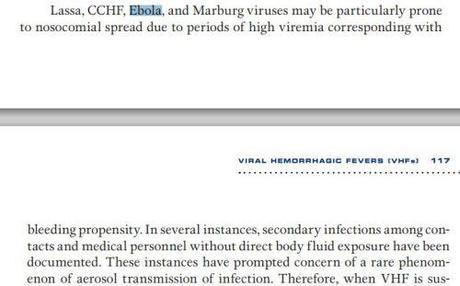From the beginning of the Ebola epidemic last spring in West Africa, the federal government’s Centers for Disease Control and Prevention (CDC) had insisted that the deadly viral hemorrhagic fever (in the infection’s horrific end stage, the victim bleeds from every orifice) can only be transmitted via direct contact with a victim’s bodily fluids — blood, vomit, urine, feces, sweat, nasal charge, or semen.
This, despite a Canadian research in 2012 which found the Ebola virus to be transmitted by air between one animal species (pigs) and another (monkeys).
On Oct. 2, 2014, however, the CDC changed their minds.
For the first time, the CDC, in the person of its director Tom Frieden, cryptically admitted that, “in theory,” a sneeze or cough “could” spread the virus from someone experiencing Ebola symptoms. Frieden did not explain what “in theory” means. (See “CDC now admits ‘in theory’ Ebola can be transmitted by air“)
Imagine my surprise when, on the tip of a reader of this blog, I discovered that the United States Army had known about this all along, since 2011 — that the Ebola virus can be transmitted by air, albeit in “rare” instances.

On pages 116-117 of Medical Management of Biological Casualties Handbook (7th Edition), published by the United States Army Medical Research Institute of Infectious Diseases in Sept. 2011, is said:
“Lassa, CCHF, Ebola and Marburg viruses may be particularly prone to nosocomial spread due to periods of high viremia corresponding with bleeding propensity. In several instances, secondary infections among contacts and medical personnel without direct bodily fluid exposure have been documented. These instances have prompted concern of a rare phenomenon of aerosol transmission of infection.”
Here’s a screenshot I took of the passage:

Note that:
- The word “nosocomial” is defined as “Originating or taking place in a hospital, acquired in a hospital, especially in reference to an infection.”
- The word “viremia” is defined as “The presence of a virus in the blood.”
- In the passage above, “high viremia” simply means the presence of a lot of Ebola viruses in the blood.
- The word “aerosol” means “A fine spray or mist.”
Translated into simpler English, the passage from U.S. Army’s handbook should read:
The Ebola virus may be particularly prone to spread in a hospital environment where Ebola patients with a lot of the virus in their blood are bleeding profusely. “Several” instances of Ebola infections had resulted among contacts and medical personnel without direct bodily fluid exposure. These “rare” instances have prompted concern that Ebola can be transmitted via a fine spray or mist.
Translated into even simpler English, that means you can catch Ebola from inhaling microscopic particles of the blood or vomit or sneeze spewed into the air by someone who is very sick with Ebola, even if you think you were following the CDC guidelines by making no bodily contact with the bodily fluids of the infected.
Read the Medical Management of Biological Casualties Handbook for yourself, here.
Do you feel safer now? /sarc
H/t FOTM’s CSM
~Eowyn

